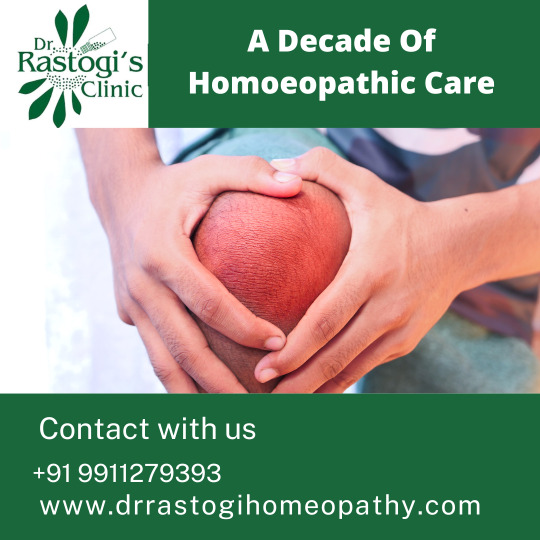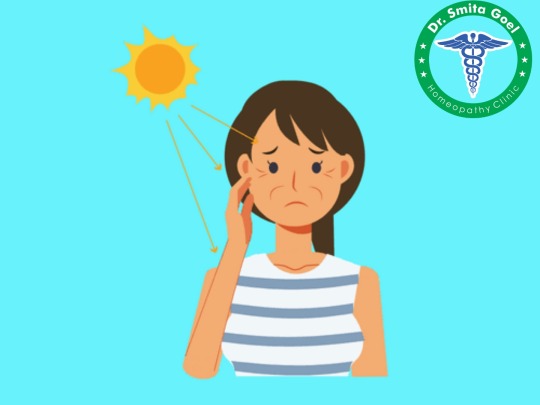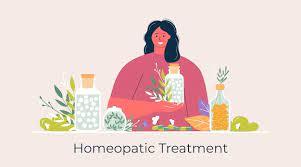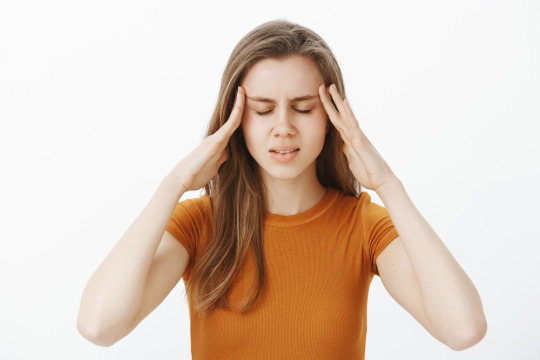#best homeopathy
Photo


Best Homeopathy Doctor in Ghaziabad
A homeopathic doctor can help you manage your lifestyle and health issues as well. Dr. Vimal Rastogi, a Ghaziabad-based homeopathy doctor, is one such person who understands the dynamics of life and treats various diseases effectively. If you are looking for a homeopathic doctor in Ghaziabad, then Dr. Vimal Rastogi will be our best choice for you. Dr. Vimal Rastogi is also known as the best homeopathy doctor in Ghaziabad.
Dr. Vimal Rastogi believes in treating people as human beings rather than mere patients; he takes time to listen to each patient one-on-one and is an expert in his field. If you want then you can contact him by the given website and Gmail
Call +91-9911279393
Gmail - [email protected]
#Best Homeopathy Doctor in Ghaziabad#Best Homeopathy Doctor#Best Homeopathy#Homeopathy#Homeopathy Doctor in Ghaziabad#Best Homeopathy Ghaziabad#Homeopathy in Ghaziabad#Doctor in Ghaziabad
3 notes
·
View notes
Text
1 note
·
View note
Text

Best treatment For Infertility, Sexual and Private problem in Delhi NCR:
We provides best treatment for Infertility in Delhi .Aura Homeopathy department of Infertility is a highly integrated, collaborative department with Homeopathic doctor who specialize in clinical research, diagnosis and Homeopathy treatment. We at Aura Homeopathy are provider of various types of Infertility treatments like Male infertility, Erectile dysfunction (ED) or Impotence , Oligospermia / Low Sperm Count / Azoospermia, Premature ejaculation (PE), Female Infertility, PCOD or PCOS, Uterus Fibroid and many more.
For more information about treatment on Infertility in Delhi visit us:
https://www.aurahomeopathy.com/
0 notes
Text
#clinic#homeopathic clinic#best homeopathic clinic#HSR Layout#best homeopathic clinic in HSR Layout#homeopathy#best homeopathy
0 notes
Photo

All You Need To Know About Ankylosing Spondylitis
Ankylosing spondylitis is a long-term disease that causes inflammation of the joints between the spinal bones, and the joints between the spine and pelvis. It eventually causes the affected spinal bones to join together. The cause of ankylosing spondylitis is unknown, but genes seem to play a role. The disease most often begins between ages 20 and 40, but may begin before age 10. It affects more males than females.
Exercise is one of the best ways to ease the pain and maintain flexibility. Pain relievers and other medications also help.
Ankylosing spondylitis is a chronic inflammatory disease that attacks the spine and the sacroiliac joints, causing arthritis. This can also cause inflammation of the eyes, bowels and other joints, and may induce fatigue, weight loss, and photosensitivity.
In the latter case, new bones may develop in an effort to treat the inflammations, hardening the joints and the spine rigidly. Ankylosing spondylitis affects three times as many men as women, while it takes women longer to receive a diagnosis. However, it can also affect younger people, affecting those as young as 15 years old and displaying some symptoms as early as age 10. In actuality, this kind of illness is less likely to develop in adults beyond the age of 40.
What are the symptoms of ankylosing spondylitis (AS)?
Although symptoms can occur in younger children or older adults, they often start to show between the ages of 17 and 45. While some people experience severe symptoms, others just endure lesser discomfort. Symptoms may flare up (worsen) and improve (go into remission) off and on. If you have ankylosing spondylitis, you may experience:
Common symptoms:
• The feeling of stiffness and pain.
• Severe pain in the tendons and ligaments.
• Back pain.
• Loss of flexibility in the spine.
• Hip pain
• joint pain
• neck pain
• Difficulty breathing.
• skin rash
• Vision problems
• Abdominal pain and diarrhea
• fatigue
How Homeopathy helps to cure Ankylosing spondylitis?
Homoeopathy treats the person as whole. It focuses on patient as a person as well as pathological condition. A Remedy is selected after full indivualizing examination and case anaylsis which includes medical history of patient, physical and mental constitution etc. Homeopathic medicines along with regular physiotherapy can help manage the symptoms of ankylosing spondylitis.
Homeopathic medicines majorly provide symptomatic management of pain and stiffness and work well in cases where the inflammation is detected in its early stages.
Homeopathic remedy for ankylosing spondylitis can help moderate the immune system to halt the progress of the disease in the initial stages, and also help manage pain and movement.
Know more: https://www.multicarehomeopathy.com/diseases/homeopathic-medicines-for-ankylosing-spondylitis-treatment
#ankylosing spondylosis#homeopathy for cervical spondylitis#cervical spondylitis treatment#spondylitis#ankylosing spondylitis#Homeopathy treatment for Cervical Spondylitis#homeopathy medicines for cervical spondylitis#spondylitistreatment spondylitis#best homeopathy doctor in india#Best homeopathy clinic in India#best doctor#best clinic#best homeopathy#casuse of spondylitis#symptoms of spondylitis#sign and symptoms of spondylitis
1 note
·
View note
Link
#homeopathy treatment#best homeopathy#homeopathy hospital near me#homeopathic hospital#homeopathy hospital
0 notes
Text
*Dr. Smita Goel Homeopathy Clinic*
www.thehomeopathyclinic.co.in
*Sunburn* — red, painful skin that feels hot to the touch — usually appears within a few hours after too much exposure to ultraviolet (UV) light from sunshine or artificial sources, such as sunlamps.
Intense, repeated sun exposure that results in sunburn increases your risk of other skin damage and certain diseases. These include dry or wrinkled skin, dark spots, rough spots, and skin cancers, such as melanoma. You can usually find sunburn relief with simply home remedies. Sunburn may take several days or longer to fade.
You can prevent sunburn and related conditions by protecting your skin. This is especially important when you're outdoors, even on cool or cloudy days.
Symptoms
Sunburn signs and symptoms include:
Pinkness or redness
Skin that feels warm or hot to the touch
Pain, tenderness and itching
Swelling
Small fluid-filled blisters, which may break
Headache, fever, nausea and fatigue if the sunburn is severe
Any exposed part of your body — including your earlobes, scalp and lips — can burn. Even covered areas can burn if, for example, your clothing has a loose weave that allows ultraviolet (UV) light through. Your eyes, which are extremely sensitive to the sun's UV light, also can burn. Sunburned eyes may feel painful or gritty.
Signs and symptoms of sunburn usually appear within a few hours after sun exposure. But it may take a day or longer to know the full extent of your sunburn.
Within a few days, your body may start to heal itself by "peeling" the top layer of damaged skin. After peeling, your skin may temporarily have an irregular color and pattern. A bad sunburn may take several days or longer to heal.
When to see a doctor
See your doctor if the sunburn:
Is blistering and covers a large portion of your body
Is accompanied by a high fever, extreme pain, headache, confusion, nausea or chills
Doesn't improve within a few days
Also seek medical care if you notice signs or symptoms of an infection. These include:
Increasing pain and tenderness
Increasing swelling
Yellow drainage (pus) from an open blister
Red streaks leading away from the open blister.
*Causes*
Skin layers and melanin
Skin layers and melanin
Sunburns are caused by exposure to too much ultraviolet (UV) light. UV radiation is a wavelength of sunlight in a range too short for the human eye to see. Ultraviolet A (UVA) is the type of solar radiation most associated with skin aging (photoaging). Ultraviolet B (UVB) is associated with sunburn. Exposure to both types of radiation is associated with developing skin cancer. Sunlamps and tanning beds also produce UV light and can cause sunburn.
Melanin is the dark pigment in the outer layer of skin (epidermis) that gives your skin its normal color. When you're exposed to UV light, your body protects itself by accelerating the production of melanin. The extra melanin creates the darker color of a tan.
A suntan is your body's way of blocking the UV rays to prevent sunburn and other skin damage. But the protection only goes so far. The amount of melanin you produce is determined genetically. Many people simply don't produce enough melanin to protect the skin well. Eventually, UV light causes the skin to burn, bringing pain, redness and swelling.
You can get sunburn on cool, hazy or cloudy days. As much as 80 percent of UV rays pass through clouds. Snow, sand, water and other surfaces can reflect UV rays, burning your skin as severely as direct sunlight.
*Risk factors*
Risk factors for sunburn include:
Having light skin, blue eyes, and red or blond hair
Living or vacationing somewhere sunny, warm or at high altitude
Working outdoors
Mixing outdoor recreation and drinking alcohol
Having a history of sunburn
Regularly exposing unprotected skin to UV light from sunlight or artificial sources, such as tanning beds
Taking a drug that makes you more likely to burn (photosensitizing medications)
Complications
Intense, repeated sun exposure that results in sunburn increases your risk of other skin damage and certain diseases. These include premature aging of your skin (photoaging) and skin cancer.
Premature aging of your skin
Sun exposure and repeated sunburns accelerate the skin's aging process, making you look older than you are. Skin changes caused by UV light are called photoaging. The results of photoaging include:
Weakening of connective tissues, which reduces the skin's strength and elasticity
Deep wrinkles
Dry, rough skin
Fine red veins on your cheeks, nose and ears
Freckles, mostly on your face and shoulders
Dark or discolored spots (macules) on your face, back of hands, arms, chest and upper back — also called solar lentigines (len-TIJ-ih-neze)
Precancerous skin lesions
Precancerous skin lesions appear as rough, scaly patches in areas that have been damaged by the sun. They may be whitish, pink, tan or brown. They're usually found on the sun-exposed areas of the head, face, neck and hands of light-skinned people. These patches can evolve into skin cancer. They're also called actinic keratoses (ak-TIN-ik ker-uh-TOE-seez) and solar keratoses.
*Skin cancer*
Excessive sun exposure, even without sunburn, increases your risk of skin cancer, such as melanoma. It can damage the DNA of skin cells. Sunburns in childhood and adolescence may increase your risk of developing melanoma later in life.
Skin cancer develops mainly on areas of the body most exposed to sunlight, including the scalp, face, lips, ears, neck, chest, arms, hands and legs. Skin cancer on the leg is more common in women than in men.
Some types of skin cancer appear as a small growth or a sore that bleeds easily, crusts over, heals and then reopens. With melanoma, an existing mole may change or a new, suspicious-looking mole may develop. A type of melanoma called lentigo maligna develops in areas of long-term sun exposure. It starts as a tan flat spot that slowly darkens and enlarges.
See your doctor if you notice a new skin growth, a bothersome change in your skin, a change in the appearance or texture of a mole, or a sore that doesn't heal.
*Eye damage*
The sun can also burn your eyes. Too much UV light damages the retina, lens or cornea. Sun damage to the lens can lead to clouding of the lens (cataracts). Sunburned eyes may feel painful or gritty. Sunburn of the cornea is also called snow blindness.
*Prevention*
Use these methods to prevent sunburn, even on cool, cloudy or hazy days. And be extra careful around water, snow and sand because they reflect the sun's rays. In addition, UV light is more intense at high altitudes.
Avoid sun exposure between 10 a.m. and 4 p.m. The sun's rays are strongest during these hours, so try to schedule outdoor activities for other times. If you can't do that, limit the length of time you're in the sun. Seek shade when possible.
Avoid sun tanning and tanning beds. Using tanning beds to obtain a base tan doesn't decrease your risk of sunburn.
Cover up. When outside, wear a wide-brimmed hat and clothing that covers you, including your arms and legs. Dark colors offer more protection, as do tightly woven fabrics. Consider using outdoor gear specially designed to provide sun protection. Check the label for its ultraviolet protection factor (UPF), which indicates how effectively a fabric blocks damaging sunlight. The higher the number, the better.
Use sunscreen frequently and generously. Apply water-resistant sunscreen and lip balm with an SPF of 30 or greater and broad-spectrum protection against UVA and UVB rays. About 15 to 30 minutes before going outdoors, apply sunscreen generously on skin that won't be protected by clothing.
Put on more sunscreen every 40 to 80 minutes, or sooner if it has washed off from swimming or sweating. If you're also using insect repellent, apply the sunscreen first. The Centers for Disease Control and Prevention does not recommend products that combine an insect repellent with a sunscreen.
The Food and Drug Administration requires all sunscreen to retain its original strength for at least three years. Check the sunscreen labels for directions on storing and expiration dates. Throw sunscreen away if it's expired or more than three years old.
The American Academy of Pediatrics recommends using other forms of sun protection, such as shade or clothing, for babies and toddlers. Keep them cool and hydrated. You may use sunscreen on babies and toddlers when sun protective clothing and shade aren't available. The best products for them are those that contain physical blockers (titanium oxide, zinc oxide), as they may cause less skin irritation.
Wear sunglasses when outdoors. Choose sunglasses with UVA and UVB protection. Check the UV rating on the label when buying new glasses. Darker lenses are not necessarily better at blocking UV rays. It also helps to wear sunglasses that fit close to your face and have wraparound frames that block sunlight from all angles.
Be aware of medications that increase your sensitivity to the sun. Common drugs that make you more sensitive to sunlight include antihistamines, ibuprofen, certain antibiotics, antidepressants, antipsychotics and some cholesterol-lowering drugs. Talk with your pharmacist about your medication side effects.

#greater noida#best homeo clinic in indirapuram#homeopathy for ibs#ghaziabad#homeopathy clinics#homeopathy cold treatment in indirapuram#homeopathy doctor#best skin doctor in ghaziabad#homeopathy#homeopathy medicine#homeopathic treatment#homeopathy skin allergies treatment in indirapuram#homeopathy skin allergies treatment in noida#homeopathy specialist in indirapuram#homeopathy treatment#homoeopathy#ghaziabad latest news#ghaziabadnews#best schools in ghaziabad#ayurvedic doctor in ghaziabad#wave city ghaziabad#ghaziabadhealthcare
2 notes
·
View notes
Text
2 notes
·
View notes
Text
Best Homeopathy Clinic in Noida | Dr. Deepika's Homeopathy

Dr. Deepika Sharma, our proficient and compassionate homeopath, is the driving force behind our clinic's success. With a wealth of experience and a deep understanding of homeopathy, she has transformed countless lives through her commitment to healing. Dr. Deepika is known for her patient-centric approach, where she takes the time to understand each individual's unique health challenges and tailors treatments to suit their specific needs.
Visit Us: https://drdeepikashomeopathy.com/
#Best Homeopathy Clinic in Noida#best homeopathic doctor near me#best homeopathic doctor in noida#best homeopathic doctor noida#top homeopathic doctor in noida
3 notes
·
View notes
Text
Homeopathy doctor in kolhapur

Homeopathy doctor in kolhapur
Kolhapur is a city in the Indian state of Maharashtra and home to many experienced homeopathy doctors. Homeopathy is an alternative medicine system that uses small doses of natural substances to stimulate the body's own healing abilities. Homeopathic doctors are trained to diagnose and treat illnesses using homeopathic remedies, which are often derived from plants, minerals, or animals.
Kolhapur has several highly qualified and experienced homeopathic doctors who are dedicated to providing their patients with personalized care and treatment plans tailored for their individual needs. With their expertise in understanding the human body’s response to various treatments, they can help people suffering from a variety of health conditions find relief without resorting to conventional medicines or treatments.
Homeopathy clinic in kolhapur
Homeopathic doctor in kolhapur
Homeopathy treatment in kolhapur
Homeopathy center in kolhapur
Best homeopathy doctor in kolhapur
Homeopathic treatment for Rheumatoid arthritis in Kolhapur
Homeopathic treatment for Psoriasis in Kolhapur
Homeopathic treatment for Asthma in Kolhapur
#homeopathy#homeopathic#homeopathy doctor#homeopathy doctor in Kolhapur#best homeopathy doctor in Kolhapur#homeopathy treatment
3 notes
·
View notes
Text
Power of Homeopathy as an Effective Treatment for Migraine

Millions of individuals worldwide suffer from the frequent neurological ailment known as migraines. Migraine is a condition that causes severe headaches, nausea, and light sensitivity that can last anywhere from a few minutes to days. A person's quality of life may be negatively impacted by the debilitating nature of migraine headaches and their potential to interfere with daily activities. Even though homeopathy is an alternative therapy, traditional medicine provides several migraine remedies, such as painkillers and prophylactic drugs. Homoeopathy is a type of complementary medicine that stimulates the body's own healing mechanisms by using greatly diluted natural chemicals. Homoeopathy has been used as an alternative medicine for over 200 years.
Homoeopathy for Migraine
Homoeopathy is a well-liked complementary treatment for migraines. Among the homoeopathic migraine treatments are Natrum muriaticum, Bryonia, Iris versicolor, and Belladonna. These treatments are thought to function by bringing the body's own energy into balance, lowering inflammation, and enhancing blood flow.
One benefit of using homoeopathy for migraines is that it doesn't have the potential side effects of using painkillers and anti-inflammatory drugs, which are common traditional migraine remedies. When administered as prescribed, homoeopathic medications are generally safe, though some patients may develop allergic responses or other negative effects.
There isn't enough data to say whether homoeopathy works to cure migraines, according to a review of clinical trials on the subject that has been released in the Cochrane Database of Systematic Reviews. The general caliber of the data is regarded as being low, despite the fact that certain individual research has shown encouraging results. To evaluate whether homoeopathy is useful for treating migraines, more research is required.
Types of Migraine:
There are two main forms of migraine.
Auratic migraine
Classical migraine is another name for migraine with aura. In this form, a feeling of aura (neurological symptoms) such as visual disturbance, hemisensory complaints, hemiparesis, or dysphasia frequently precede the attack. Most often, a visual aura is present. The aura often lasts a maximum of sixty minutes and develops over a period of 5 to 20 minutes. A headache, feeling of unwellness, and/or photophobia accompany it. The agonizing headache could persist for four to seventy-two hours.
Migraine without an aura
Ninety percent of migraine sufferers in women have this type of migraine, making it the most prevalent. This form of headache does not have an aura and only happens in episodes. An emotional condition, such as tension, euphoria, or any intense light or odor, may be the source of the headache. The headache primarily affects one side and gradually gets worse. The headache is frequently accompanied by nausea, vomiting, food intolerance, or sensitivity to bright lights and strong odors.
Prevalence of Migraine:
Females are more likely than males to experience migraines, with a male to female ratio of 1:3. Ninety percent of migraineurs have a family history of the condition. As people get older, migraine attacks become less common.
What Causes Migraines?
Genetic Propensity
High Oestrogen Levels
Sleep Deprivation
Emotional Strain
Noxious Odors
Migraine Symptoms:
Migraine Symptoms Without An Aura
The sort of vascular headache that occurs the most frequently is a migraine without aura. Moderate to severe headaches, a pulsating quality, a unilateral location, worsening by climbing stairs or engaging in other common activities, nausea and/or vomit, photophobia and phonophobia, and repeated attacks, each ranging 4 to 72 hours, are among the symptoms.
Migraine With Auratic Symptoms
The premonitory symptoms of headache can include motor, sensory, or visual complaints. Most victims have stated that visual problems are the most prevalent. Headache, feeling dizzy, and photophobia follow the aura.
Homoeopathic Migraine Treatments
Belladonna
A popular homoeopathic treatment for migraines is belladonna. The deadly nightshade plant's byproduct, belladonna, is said to have anti-inflammatory and blood flow-improving properties. Migraines with throbbing discomfort, redness, and heat are frequently treated with belladonna.
Bryonia
A typical homoeopathic treatment for migraines is bryonia. Bryonia, which is produced by the white bryony plant, is thought to function by easing pain and promoting blood flow. When a migraine occurs accompanied by a monotonous, throbbing pain that gets worse with movement, bryonia is frequently prescribed.
Versicolor iris
Homoeopathic treatment for migraines that is frequently used is iris versicolor. Iris versicolor, which comes from the blue flag plant, is thought to have anti-inflammatory and blood-flow-improving properties. Iris versicolor is frequently prescribed for migraines that come with severe, excruciating pain and nausea.
Muriatic natrum
A typical homoeopathic treatment for migraines is natrum muriaticum. Natrum muriaticum, which is made from sea salt, is thought to act by easing inflammation and enhancing blood circulation. Natrum muriaticum is frequently prescribed for migraines that come with throbbing pain and susceptibility to light.
Conclusion
There are generally no risks associated with using homoeopathy to treat migraines, unlike conventional migraine treatments. While homoeopathy may offer some migraine patients some relief, it's vital to speak with a doctor before utilizing it as a therapy. To guarantee that you obtain the right care for your migraines, it is crucial that you see a doctor. Visit us and book an appointment now with Dr. Shubham Tiwary.
#homeopathy#homeopathy doctor#homeopathic medicines#homeopathy treatment#Homeopathic remedies#best homeopathy doctor near me#homeopathy doctor near me#homeopathy near me#consult a doctor
2 notes
·
View notes
Text
#homeo doctor#homeopathy doctor#homoeo clinic#homoeo doctor#homeopathy doctor online#homeo doctor online#homeo clinic jaipur#best homeo clinic jaipur
3 notes
·
View notes
Text
#best homeopathy hospital#homeopathy hospital in hyderabad#homeopathy clinic in hyderabad#near by homeopathy#best homeopathy#homeopathyc doctor
1 note
·
View note
Text
#online homeopathy cunsulting#best homeopathic doctor online consultation#online homeopathy consultation near me#online homeopathic treatment
2 notes
·
View notes
Text
Best Online Homeopathy Doctors in India | Book online Homeopathy Consultation
Avikadoctors' world-class online homeopathy consultation services are research-based and scientific, and we help you access ethical homeopathic treatment procedures. Online Homeopathic Clinic

#homeopathicdoctor#homeopathy#homeopathyforall#homeopathytreatment#homeopathydoctors#homeopathicmedicine#homeopathic#homeopathicdoctor
#Online Homeopathic Clinic#Homeopathy Doctor Online#Online Homeopathic Doctor India#online homeopathy treatment#Online Homeopathy Consultation#Online Homeopathic Doctor#online homeopathy treatment In India#Homeopathy Best Doctors#Top Homeopathy Doctor Near Me#Homeopathic Doctors Online
2 notes
·
View notes
Text
LASER HAIR REMOVAL

Laser hair removal treatment is better than anything. The most effective way to eliminate unwanted facial hair as in the nose or on the chin is with a laser.
#Best Homeopathy Clinic in Indirapuram#Homeopathy Specialist in Indirapuram#Cryolipolysis Clinic in Indirapuram#Tattoo Removal in Indirapuram#Anti Aging Treatment in Indirapauram#Training center for Makeup courses in indirapuram#Training center for beauty courses in indirapuram#Hair Removal Clinic in Indirapuram#Weight Loss Clinic in Indirapauram#Laser Treatment in Indirapuram#Laser Hair Removal in Indirapuram#Hair Loss Treatment in Indirapuram#Best Dermatologist in Indirapuram#Skin Specialist in Indirapuram#Best Skin Specialist in Indirapuram#Weight Loss Clinic in Indirapuram
2 notes
·
View notes